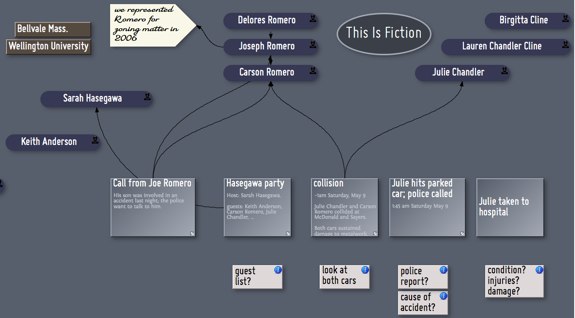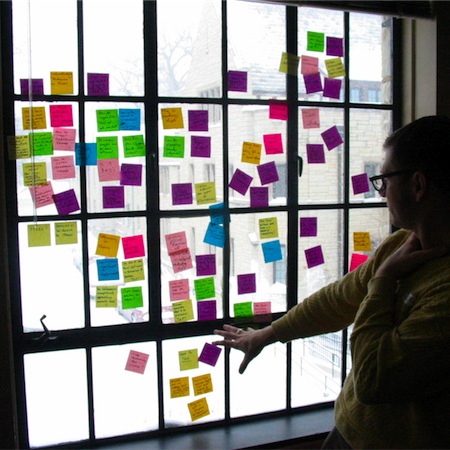What Happened
Hosmer got to the office, unpacked, made coffee. It was shaping up to be a long Saturday. He'd expected to have a quiet day, free from interruptions, to work on his writing and catch up on some case notes; now he found himself jotting down the facts and timeline of this new case.
Was it even a case?
While waiting for Joe Romero to call back with a conference time, he called the Bellvale Police. Woodson was out — he’d been working most of the night — but the basic outline they were willing to give him fit with what Joe Romero has said.
- Julie Chandler was involved in a second accident last night, a single-car collision, to which the Grant Woodson had responded.
- She was taken to Bellvale Hospital, treated there for injuries that appeared minor, should was expected to be released shortly.
- At the scene, Ms. Chandler appeared dazed and confused, either because she was intoxicated or as a consequence of the accident. Some pills, found on the front seat, were being tested. Chandler did mention a previous incident involving Mr. Romero, her boyfriend.
- The Chandler BMW has been towed to Jackson Garage. The car was owned by Ms. Chandler’s mother, Birgitta Cline. “One of her mothers,” the desk guy reminded him.
“Julie Chandler” hadn’t rung a bell for Hosmer, but Birgitta Cline certainly did. She ran Cline Imaging, a Bellvale software house that made image analysis tools for Hollywood, and she was deeply involved in the School Board, the Immigrant Shelter Program, Bellvale Recycling, and the Community Gay Coalition. Her wedding, to Lauren Chandler Cline, had created a ruckus the First Parish back in 2004.
Hosmer reminded himself Romero’s car also need to be inspected by Romero’s insurance adjuster. And he made a note to himself about those conveniently conspicuous pills.
Then, Joe Romero called to say that Grant Woodson was at his doorstep. Hosmer saved his notes and grabbed his car keys.

